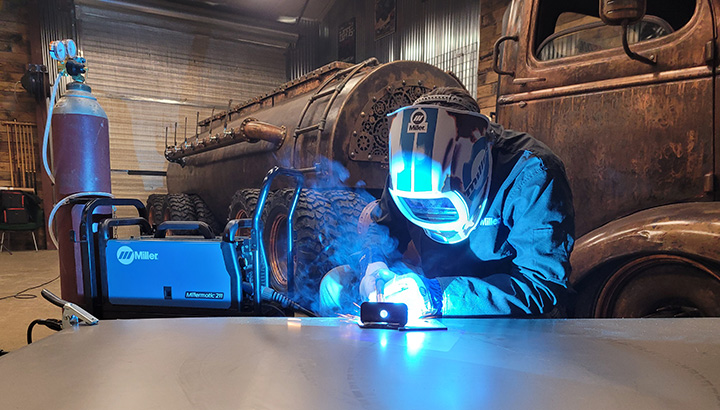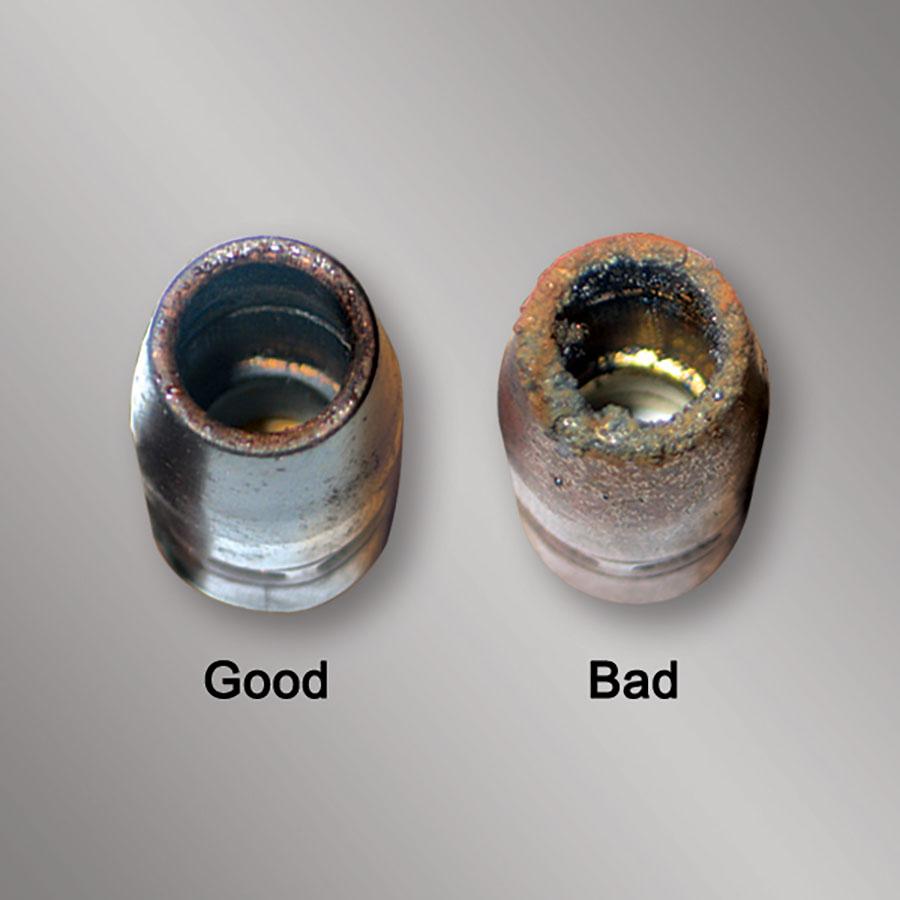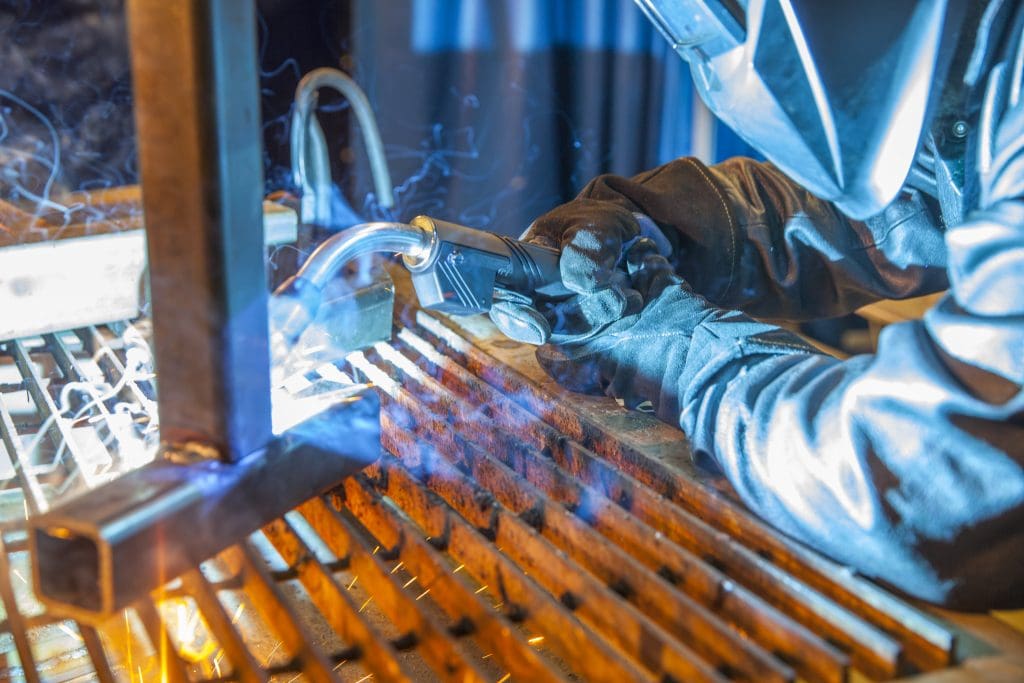MIG welding is most effective on metals of medium thickness and for continuous, high-speed welding jobs. It excels in manufacturing and fabrication industries due to its efficiency.
Metal Inert Gas (MIG) welding, also known as Gas Metal Arc Welding (GMAW), is a versatile method that joins pieces of metal using a continuously fed wire and a weld pool formed by an arc. This technique is widely recognized for its speed and ease of use, making it a popular choice for various applications, including automotive repair, construction, and industrial manufacturing.
The adaptability of MIG welding allows it to be used on a range of materials such as steel, stainless steel, and aluminum. Its effectiveness shines in tasks that require repeatability and long weld runs. The process is not only fast but also produces strong, high-quality welds when performed correctly. MIG welding is user-friendly, ideal for beginners and professionals alike, often resulting in increased productivity and reduced operational costs.
Advantages Of Mig Welding
MIG welding stands out in the manufacturing world. It is known for its reliability and wide-ranging applications. Let’s dive into why this method is a go-to for professionals.
High Efficiency
MIG welding is praised for its fast production time. The continuous wire feed allows for extended welding without interruptions. This efficiency makes it ideal for large-scale projects.
Versatility
Adaptability is a key benefit of MIG welding. It is suitable for different metals and various thicknesses. Users can weld stainless steel, aluminum, and more.
Lack Of Slag
In contrast to other welding methods, MIG welding produces no slag. This results in cleaner welds and less post-weld labor.
Less Cleanup Work
MIG welding’s minimal spatter levels mean less time spent on cleanup. Workspaces and final products remain cleaner, saving time and resources.
Limitations Of Mig Welding
MIG welding offers remarkable speed and ease of use. But it’s not a one-size-fits-all solution. When considering MIG welding, it’s crucial to understand its specific limitations. These restrictions can impact project quality and feasibility.
Thinner Materials
While MIG welding excels with thick materials, its capability wanes when applied to thinner sheets. The intense heat can quickly lead to burn-through or warping. When working with metals such as sheet metal or fine gauge steel, alternative techniques may be more suitable. Choosing the right method is essential to maintain integrity and appearance.
Wind Conditions
MIG welding relies on a shielding gas to protect the weld pool from contamination. Outdoor welding, particularly in windy conditions, can compromise this protective gas layer. Disruption of the shielding gas can lead to porosity, which weakens the weld. Seeking wind-sheltered environments or considering other welding processes is beneficial for outdoor projects.
Limited Positional Welding
MIG welding is most effective in the flat or horizontal position. When the job requires welding overhead or in vertical positions, controlling the weld puddle becomes more challenging. Operators may find it difficult to maintain a high-quality weld. In such cases, processes like TIG or stick welding might be recommended to achieve better results in challenging positions.
Applications Of Mig Welding
Understanding when to use MIG welding is key in many industries. This highly efficient method shines under specific conditions. Let’s delve into areas where MIG welding demonstrates its full potential.
Automotive Industry
MIG welding’s versatility makes it a top choice for automotive work. Its unique benefits include:
- Speed: Fast welding pace means more repairs in less time.
- Precision: Achieves strong, clean welds on thin metals.
- Accessibility: Reaches tight spaces in vehicles easily.
Car manufacturers and repair shops rely on MIG welding for assembly and maintenance.
Construction
Durability and strength are critical in construction. MIG welding is perfect for:
- Infrastructure: Bridges and buildings benefit from reliable MIG welds.
- Outdoor projects: From fences to art installations.
Its ability to bond a variety of metals makes it indispensable on a construction site.
General Fabrication
MIG welding excels in diverse fabrication settings:
| Application | Benefit |
|---|---|
| Furniture | Clean welds for aesthetic appeal. |
| Tool making | Sturdy bonds for long-lasting tools. |
| Custom work | Adaptable for unique design solutions. |
Fabricators choose MIG for its adaptability and superior finish.

Credit: www.millerwelds.com
Mig Welding Setup
Setting up for MIG welding requires precise preparation. Each element of the setup contributes to the procedure’s effectiveness. Understanding the right combination of equipment is key. This ensures strong, clean welds across various applications.
Power Source
The power source for MIG welding plays a critical role in the process. MIG welders need a steady, controllable current to create consistent welds. Normally, a direct current (DC) power source is the choice. It provides a stable arc and smooth welding experience. Look for a machine that offers adjustable voltage and amperage settings. This will match the welding job at hand.
Shielding Gas
Shielding gas protects the molten weld pool from air impurities. This results in cleaner and stronger welds. The most common gases used are:
- Carbon Dioxide (CO2): Offers deep penetration, but can create more spatter.
- Argon: Provides a smoother arc and less spatter, ideal for thin metals.
- Mixtures: Combining Argon with CO2 balances penetration and smoothness.
Welding Wire
Selecting the right welding wire size and material is vital. Use a wire compatible with the metal being welded. Common wire diameters range from 0.6mm to 1.2mm. Thinner wires are better for welding thin materials, while thicker wires suit heavier applications.
Electrode Wire
The electrode wire is the filler material that melts to form the weld. Its composition should match or be compatible with the base metals. This ensures structural integrity. Electrode wire comes in various alloys, suitable for different types of metals and jobs.
Factors Affecting Mig Welding Effectiveness
MIG welding shines with its versatility and efficiency, but certain factors can affect its performance. Understanding these factors ensures optimal results every time. Let’s explore what influences MIG welding’s effectiveness.
Material Thickness
The thickness of the material is crucial in MIG welding. Thin materials require less heat to avoid burn-through. With thicker materials, a higher heat input is necessary for deep penetration. Select the right MIG welder settings to match the material for strong welds.
Joint Design
The design of the joint directly impacts welding success. Simple joints are effective for MIG welding. Complex joints might need special attention. Proper joint preparation leads to better welding conditions and stronger bonds.
Welding Speed
Speed is another key factor. Too fast, and welding may be weak. Too slow, and it can cause excess heat build-up. The right speed ensures a consistent and durable weld. Practice helps find the perfect balance.
Safety Considerations In Mig Welding
MIG welding is highly effective, but it can be dangerous without proper safety measures. Protecting welders from harm calls for strict adherence to safety protocols. Understanding these safety considerations ensures a safe and efficient welding environment.
Personal Protective Equipment
Personal Protective Equipment (PPE) is the first line of defense in welding safety. The following PPE is essential for MIG welders:
- Welding Helmet: Protects eyes and face from sparks and harmful light.
- Gloves: Insulated gloves guard against electric shock and heat.
- Apron or Jacket: Flame-resistant materials shield the body from spatter.
- Safety Glasses: Wear under the helmet for added eye protection.
- Boots: High-top leather boots prevent burns and electric shocks.
Ventilation
Proper ventilation is crucial in MIG welding to disperse harmful fumes. Here are key points:
- Extraction Fans: Remove contaminated air from the work area.
- Air Filters: They trap hazardous particles before air recirculation.
- Respirators: Necessary when working in confined spaces.
Fire Prevention
Fire hazards in MIG welding necessitate preventive measures:
| Action | Purpose |
|---|---|
| Clean Area | Removes flammable materials from the vicinity. |
| Fire Extinguisher | Ensures quick response to any fire outbreak. |
| Fire Blankets | Smother small fires quickly and safely. |
| Inspection | Regular checks on equipment to prevent malfunctions. |
Challenges In Mig Welding
MIG welding enjoys widespread popularity for its versatility and speed, but it is not without its challenges. A few key issues can arise, demanding skill and attention from the welder. Understanding these challenges helps in achieving the strong, clean welds that MIG is known for. Let’s take a closer look at some common troubles like burn-through, spatter, and porosity.
Burn-through
Burn-through happens when too much heat melts through the metal. This is often seen in thinner materials. To prevent this:
- Use lower voltage settings
- Adjust wire speed accordingly
- Keep welds short and quick
Spatter
Spatter refers to the metal droplets expelled during welding that cool and stick to the work surface. To reduce spatter:
- Check gas flow rates
- Ensure proper wire feed speed
- Clean and maintain nozzle regularly
Porosity
Porosity in welding creates tiny holes within the weld. They can weaken the joint. Porosity is often prevented by:
- Protecting the weld from drafts
- Using dry shielding gas
- Removing rust or oil from base metal

Credit: www.canadianmetalworking.com
Improving Mig Welding Effectiveness
Metal Inert Gas (MIG) welding shines in numerous industrial and home projects. To harness its full potential, improving welding effectiveness is critical. The following sections dive into methods that can elevate the process.
Proper Technique
Mastering MIG welding comes down to technique. Here are some essentials:
- Maintain a consistent angle with the welding gun.
- Choose the right speed and power settings for your material.
- Ensure your working surface is clean and clear of contaminants.
- Use a series of short, interconnected stitches for thicker materials.
Equipment Maintenance
Effective MIG welding also needs well-maintained equipment. Here’s how to keep your gear in top shape:
- Clean the nozzle after every use to prevent blockages.
- Check and replace the contact tip regularly to ensure good electrical conductivity.
- Inspect the welding wire’s condition and replace if rusty or dirty.
- Regularly check for gas leaks and proper gas flow.
Mig Welding Vs. Other Methods
MIG welding, also known as Gas Metal Arc Welding (GMAW), stands out in the welding world due to its efficiency and ease of use. Ideal for joining a variety of materials and thicknesses, it’s particularly effective for long, continuous welds. But how does MIG compare to other popular welding techniques like TIG and Stick welding? Let’s break it down.
Comparison To Tig Welding
TIG welding, or Tungsten Inert Gas welding, is known for precise, high-quality welds. Unlike MIG welding, TIG requires significant skill and is less forgiving of errors. Here’s why MIG might be the better option in certain scenarios:
- Speed: MIG welding is faster, making it great for production work.
- Ease of use: MIG is user-friendly, even for beginners.
- Versatility: MIG handles thicker materials more effectively.
Comparison To Stick Welding
Stick welding, or Shielded Metal Arc Welding (SMAW), is another common method. While stick welding is versatile and portable, MIG welding shines under certain conditions:
- Cleaner welds: MIG welding produces less spatter compared to Stick.
- User-friendly: Automating the wire feed improves consistency.
- Material suitability: MIG is better for thin to medium gauges.
| Aspect | MIG Welding | TIG Welding | Stick Welding |
|---|---|---|---|
| Speed | Fast | Slow | Variable |
| Difficulty | Easy | Hard | Moderate |
| Material Thickness | All ranges | Thin | All ranges |
| Spatter | Low | None | High |
| Weld Appearance | Good | Excellent | Good |
| Portability | Moderate | Low | High |

Credit: www.tregaskiss.com
Future Trends In Mig Welding
The realm of Metal Inert Gas (MIG) welding is rapidly evolving. Technological advancements and industry demands have set the stage for innovative trends.
Advancements In Equipment
Future MIG welding equipment will boast remarkable features. Expect efficiency and precision in the next generation of welders. Here’s a glimpse:
- Intelligent machines that adjust settings on-the-fly.
- Lighter materials make equipment more portable.
- Enhanced power sources reduce energy consumption.
These upgrades ensure top-tier welds with minimal input.
Automation
Automation stands at the forefront of MIG welding’s future. Industries will witness:
| Automation Area | Impact |
|---|---|
| Robotics | Increased speed and volume of welding tasks. |
| Precision Control | Impeccable accuracy in welds, reducing waste. |
| Data Analytics | Real-time monitoring for continuous improvement. |
Automated systems translate to cost savings and high-quality outcomes.
Frequently Asked Questions For When Is Mig Welding Most Effective
What Is Mig Welding Best Used For?
MIG welding is highly effective for joining a wide range of metals, especially carbon steel, stainless steel, aluminum, and non-ferrous materials. Its versatility makes it suitable for applications in auto-motive, construction, and manufacturing due to its speed and adaptability to robotic automation.
When Should You Avoid Using Mig Welding?
MIG welding should be avoided on thin materials prone to warping, and in outdoor conditions where wind might disrupt the shielding gas. It is also less effective when extreme portability is required, as the equipment can be bulky compared to other welding methods.
Does Mig Welding Work Well With Thick Materials?
Yes, MIG welding can be very effective with thick materials, particularly with the use of multiple passes to build up the weld. It’s a preferred technique for its deep penetration and ability to handle heavy-duty fabrication work.
What Are The Main Advantages Of Mig Welding?
The main advantages of MIG welding include its high welding speed, the ease of learning and use, and minimal cleanup due to minimal spatter. It also provides high-quality, strong welds with a good appearance, and is easily automated, making it efficient for mass production.
Conclusion
MIG welding shines for its versatility, efficiency, and strength. It’s ideal for various metals and thicknesses, especially in industrial settings. As we’ve uncovered, when precision and speed are paramount, MIG welding is the go-to method. Embrace this technique to enhance your fabrication quality and workflow.